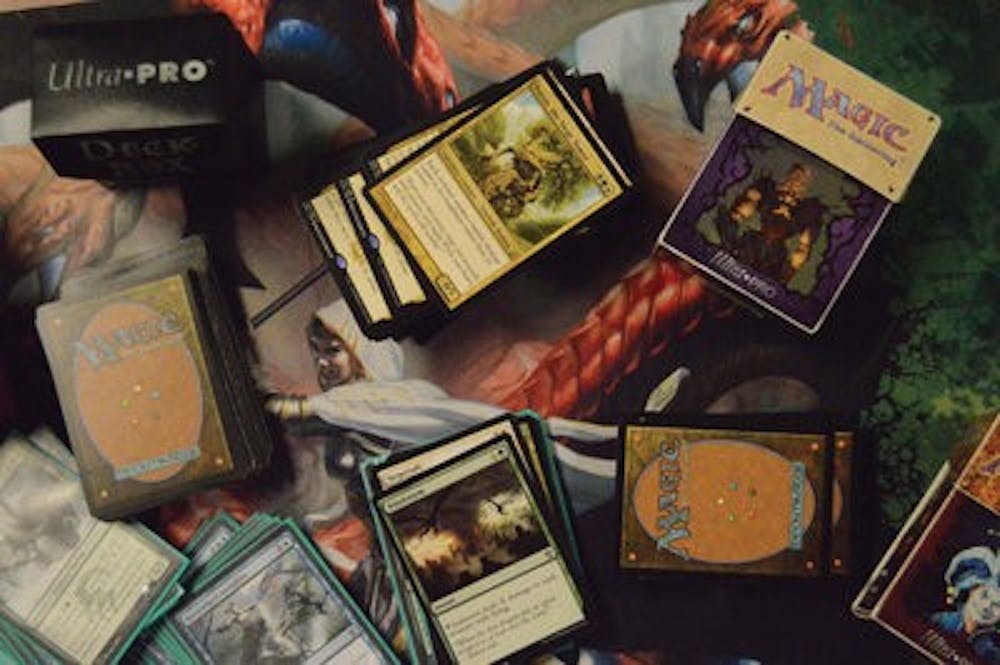Nine people sat around a table.Boxes and binders stuffed with cards adorned with mythical beasts were set beside them, ready for use.
The name of the game is Magic: The Gathering, and its participants gather to compete in cardboard-bound brawls twice a week.
"The goal is to bash your opponent in the face with fantasy monsters," said Abraham Schnake, vice president of the Magic card game club and senior in accounting.
Schnake slid two trading cards with elaborately illustrated angels on them across the table and toward his opponent, Kevin Murphy, fellow member of the Magic Club and senior in public administration. Several layers of cards lay in rows and dice of different shapes and colors were scattered on the table.
"And I just bashed his face in with two of my angels," Schnake said.
Magic: The Gathering was created in 1993, but has only had an official place at Auburn since the Magic Club was founded in 2009.
The club sits by the Student Center Game Room on Monday and Thursday afternoons, with members battling it out through their massive collections of playing cards.The fantasy monsters displayed on the cards vary in power and ability.
Players can send their creatures to attack an opponent. Unless that opponent has creatures of his or her own to stop this attack, he or she will lose life. Once a player's life reaches zero, he or she loses.
Many competitive participants have extensive collections, containing thousands of cards.
Like any collector's item, the cards change in worth with the passing of time and become more valuable over time. If the card is particularly powerful during game play, and also has a vintage aspect, it could cost thousands of dollars.
Murphy said a card called the Black Lotus, which was a part of the original set of Magic cards, is extremely valuable in game play as well as financially. It is currently priced at about $25,000, and continues to rise.
"The deck I'm playing now is valued at about $375," said Sally Martin, senior in psychology. "My trade binder is worth about $2,000."
Martin said, similar to most hobbies, Magic only increases in competition and amusement with the amount of time and money one is willing to invest in it.
"Once you get a good card base, trading is the way to go for collection's sake," Martin said. "Also, if you can have hunches on which cards will be good."
Many of the members have been playing Magic since they were kids. They slowly built their repertoire of trading cards as time passed. Many players fade in and out of involvement.
"I want to play this when I'm an old grandma," Martin said. "I expect to be showing my future kids how to play, but not letting them touch my expensive cards."
Consistent contributors, Murphy said, develop a savvy and familiarity with the game, so making predictions becomes second nature.
"There is a small subset of players, that myself and Kevin are a part of, that play to win and try to build the best possible deck," Schnake said. "Most players just play casually. They play the cards they like and think are fun."
However, as time goes on and more and more characters and strategies get introduced, the complexities of the game itself become taxing on its participants.
Members recount the simplicity of the game in its original glory, but with increasing size and interest, competition becomes fiercer.
"It doesn't play anything like what it was," Murphy said. "It feels like an entirely different game. It's really complicated, but that makes the game way more interesting than the original. It works in ways you wouldn't expect."
Do you like this story? The Plainsman doesn't accept money from tuition or student fees, and we don't charge a subscription fee. But you can donate to support The Plainsman.





